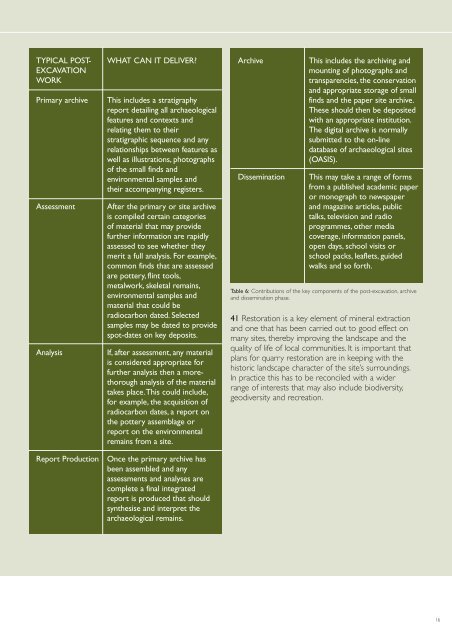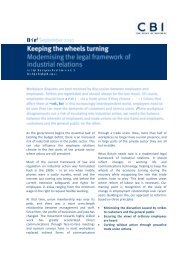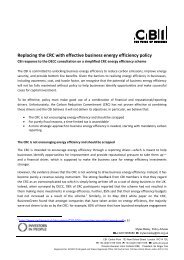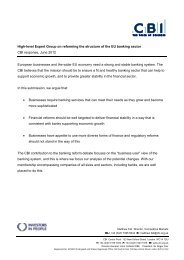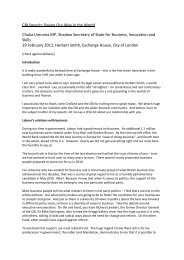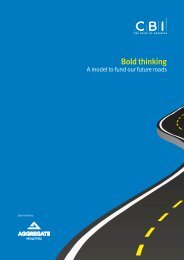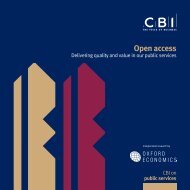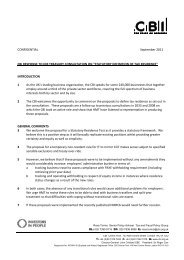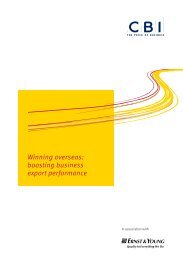Minerals Extraction and Archaeology: A Practice Guide - CBI
Minerals Extraction and Archaeology: A Practice Guide - CBI
Minerals Extraction and Archaeology: A Practice Guide - CBI
Create successful ePaper yourself
Turn your PDF publications into a flip-book with our unique Google optimized e-Paper software.
TYPICAL POST-EXCAVATIONWORKPrimary archiveAssessmentAnalysisReport ProductionWHAT CAN IT DELIVER?This includes a stratigraphyreport detailing all archaeologicalfeatures <strong>and</strong> contexts <strong>and</strong>relating them to theirstratigraphic sequence <strong>and</strong> anyrelationships between features aswell as illustrations, photographsof the small finds <strong>and</strong>environmental samples <strong>and</strong>their accompanying registers.After the primary or site archiveis compiled certain categoriesof material that may providefurther information are rapidlyassessed to see whether theymerit a full analysis. For example,common finds that are assessedare pottery, flint tools,metalwork, skeletal remains,environmental samples <strong>and</strong>material that could beradiocarbon dated. Selectedsamples may be dated to providespot-dates on key deposits.If, after assessment, any materialis considered appropriate forfurther analysis then a morethoroughanalysis of the materialtakes place.This could include,for example, the acquisition ofradiocarbon dates, a report onthe pottery assemblage orreport on the environmentalremains from a site.Once the primary archive hasbeen assembled <strong>and</strong> anyassessments <strong>and</strong> analyses arecomplete a final integratedreport is produced that shouldsynthesise <strong>and</strong> interpret thearchaeological remains.ArchiveDisseminationThis includes the archiving <strong>and</strong>mounting of photographs <strong>and</strong>transparencies, the conservation<strong>and</strong> appropriate storage of smallfinds <strong>and</strong> the paper site archive.These should then be depositedwith an appropriate institution.The digital archive is normallysubmitted to the on-linedatabase of archaeological sites(OASIS).This may take a range of formsfrom a published academic paperor monograph to newspaper<strong>and</strong> magazine articles, publictalks, television <strong>and</strong> radioprogrammes, other mediacoverage, information panels,open days, school visits orschool packs, leaflets, guidedwalks <strong>and</strong> so forth.Table 6: Contributions of the key components of the post-excavation, archive<strong>and</strong> dissemination phase.41 Restoration is a key element of mineral extraction<strong>and</strong> one that has been carried out to good effect onmany sites, thereby improving the l<strong>and</strong>scape <strong>and</strong> thequality of life of local communities. It is important thatplans for quarry restoration are in keeping with thehistoric l<strong>and</strong>scape character of the site’s surroundings.In practice this has to be reconciled with a widerrange of interests that may also include biodiversity,geodiversity <strong>and</strong> recreation.16


